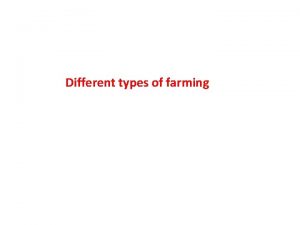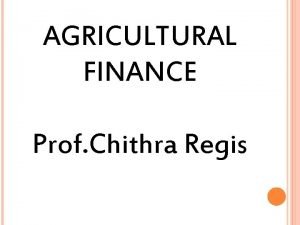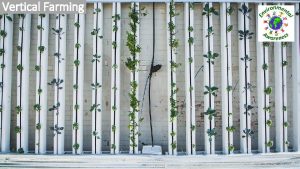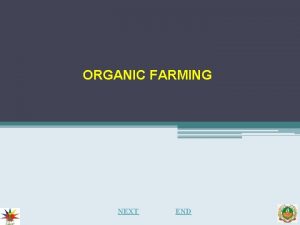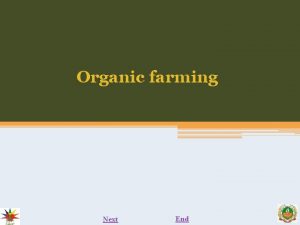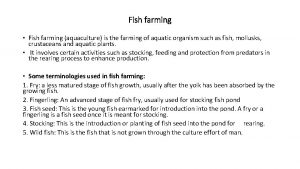DRY LAND FARMING Prof Chithra Regis Dry land









- Slides: 9

DRY LAND FARMING -Prof. Chithra Regis

Dry land farming is agriculture dependent upon the vagaries of weather, especially precipitation. In its broadest aspects, dry land farming is concerned with all phases of land use under semiarid conditions: 1. Not only how to farm but 2. how much to farm and 3. whether to farm must be taken into consideration

Dry land farming is a special case of rainfed agriculture practiced in arid and semiarid regions in which annual precipitation is about 20– 35% of potential evapotranspiration. Dry-land farming in India is thus defined broadly to cover rainfed agricultural operation dominated by low water requiring crops in those arid and semiarid tropical regions of the country.

In order to catch early showers, first the ploughing and harrowing operations are done. The second ploughing and harrowing operations are done during the rainy season in order to open the soil to the relatively heavier rain. The ploughing and harrowing operations are done for preventing loss of land moisture by evaporation.

There are three components of a successful Dry land farming system: (1) retaining the precipitation on the land, (2) reducing evaporation from the soil surface to increase the portion of evapotranspiration used for transpiration, and (3) utilizing crops that have drought tolerance and that fit the precipitation patterns. Although these components have been known for centuries, new technologies continue to be developed that increase crop production in water-short areas.

The important characteristics of dry-land farming includes: (a) Low agricultural productivity, (b) High degree of vulnerability to vagaries of nature, (c) Instability in output, (d) Complete dependence on rains, (e) Application of traditional agricultural methods and

In India, a huge area of land remained fallow for want of assured water supply required for agriculture. Recently, an estimate of such arid lands where dry land farming technology can be adopted. As per this estimate, a total of about 37 million hectares of such arid lands, spread over 92 districts in different regions of the country can be brought under dry-land farming technology which could serve the twin purpose of controlling soil erosion, as well as increasing agriculture production and productivity.

Much thrust on the improvement of dry-land farming more particularly for the production of pulses and oilseeds in which the country is deficient. Accordingly about 5, 000 micro watersheds have been identified by the Government for adopting dry-farming technology

In order to improve dry-land farming in the country, the Government proposed to follow an • integrated and multi- disciplinary approach for the adoption and development of dryland farming in the country. • NABARD and co operative banks have already expressed their willingness to extend financial help for running those viable dry land farming projects in the country.










